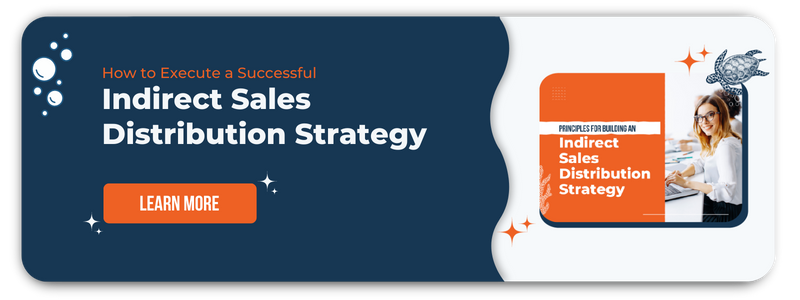4 Tips To Increase Building Materials Sales Using Partner Incentives & Rewards Programs
Emily Buchan

Not all of your partners are created equally. There is no "one size fits all" box, meaning that your sales incentive ideas should be varied enough to address the needs of the widest possible audience. In terms of incentive management, you'll want to offer many different types for people to choose from depending on what suits them the most.
Sales incentives, coupled with generous rewards programs, have long been ideal strategies for building materials manufacturers who sell their products indirectly. An indirect incentive program and other types of customized channel incentive programs are a perfect way to not only optimize your current sales for maximum engagement, but to improve the invaluable relationships you're building moving forward. Getting to this point isn't necessarily difficult—you just need to keep a few key things in mind.
1. Expand Your Existing Programs With New Types of Channel Partner Incentives
One of the biggest opportunities you have to improve your relationships with your channel partners involves capitalizing on any opportunity you have to offer more value. High performing channel partners may have already "maxed out" in terms of how much volume they can move or how profitable they are. But a robust channel rewards program will help solidify their loyalty to you, helping to retain your top partners for as long as possible.
Activity-based incentives are a great way to do this, as they're an opportunity to reward a particular channel partner for managing relationships and various contracts all throughout your building materials manufacturer supply chain. They could get incentives for scheduling demonstrations or using a co-branded marketing campaign.
A few other types of incentives that you could explore include market development funds (also called MDFs) and sales performance incentive funds (also called SPIFs). In the case of an MDF, you're making funds available to your channel partners to help support a wide range of initiatives to help with sales and marketing programs. On the other hand, a SPIF is a financial incentive that is short-term in nature and designed to encourage your channel partners to increase the sales of a particular product or group of products.
Channel rebates are another great way to encourage your partners to sell more of your materials by giving them a percentage of each sale. In addition to retention rebates and mix rebates, you could explore volume rebates or growth rebates.
Regardless of the incentives you use, the most important thing is that you offer them and evolve them over time. Try to think about the types of channel partners you work with and come up with options that work for those unique people. To help your building materials partner network excel, you'll need to find the perfect mix, level, and frequency of incentives. Not only will this help you increase the revenue and profit from the channel in question, but it can also expand the depth of customer relationships as well.
2. Encourage Engagement Through Referral Incentives
If you're not already using them, referral incentives are a great way for both manufacturers and distributors to expand their brand reach. Under this type of program, your channel partners get rewarded for both deal registration and for identifying other new opportunities. A contractor in your network, for example, might be able to earn points any time they register a potential end user that ends up turning into a qualified opportunity.
Just a few examples of the types of referral incentives you should explore include but are not limited to:
- Points-based rewards (as mentioned above)
- Gift cards
- Travel promotions
- Prepaid debit cards
3. Embrace a Partner Relationship Management Platform
An online partner portal, otherwise referred to as a PRM, can be a great way to help you create, track, and manage your rewards programs—all in a way that is specific to your business. The right PRM can equip manufacturers like yourself with the tools you need to offer, manage, and dole out incentives for partner sales.
A PRM helps you create performance-based rewards programs to improve the yield, reach, and mix of a group of partners. They even allow you to experiment with current popular incentive programs that offer non-monetary rewards, micropayments, and gamification features as well.
You could also use a PRM to track the appeal of different types of rewards over time, allowing you to figure out what is working and what isn't. If you're using a CIPM program or an HMI program, for example, a PRM can help you track engagement in a way that highlights those incentives that offer a lot of appeal and which aren't really performing in the way you'd hoped.
You'll also have the freedom to give out these rewards in a way that makes the most sense given the partner in question, thus increasing the flexibility of your program as well.
4. Empower Indirect Distribution Channel Collaboration
Along the same lines, you need to remember that your channel partners are exactly that—partners in every sense of the term. For the best results, you need to initiate collaboration as often as you can in your indirect distribution channel relationships.
This means making sure that your partners always have up-to-date insight into the needs of your end users, along with information about their concerns and desires. Remember that a portion of your channel account manager's time should always be spent on developing the additional content and resources that they can depend on when educating buyers about your products. This helps nurture them towards a purchase in a more organic way. This is known as Through Channel Marketing.
But remember: always give credit where credit is deserved. If you are engaged with "with channel" partnerships where co-branding is utilized, be sure to find amicable ways to promote the content mutually." Any collaborative efforts that you engage in should recognize the success of both you and your partners in equal measure.
In the end, a quality incentive company program is one of the best ways to accomplish a number of important goals, all in one fell swoop. Not only does it help maximize engagement between you and your current channel partners, but it also helps you increase revenue as well. As your program grows more robust, you'll definitely want to deploy an online partner portal to help manage it all. Doing so will allow you to capitalize on every opportunity to create, track, and improve these programs moving forward.


